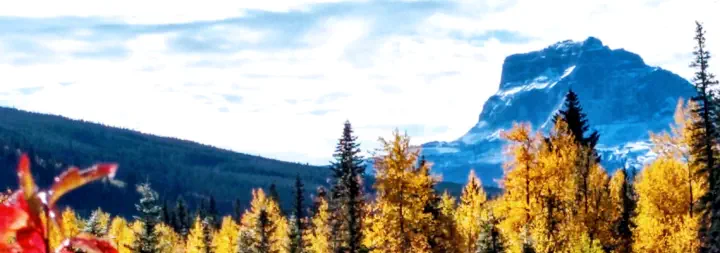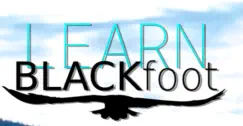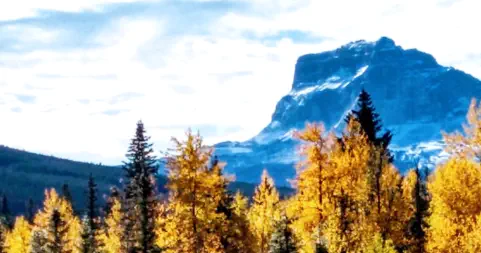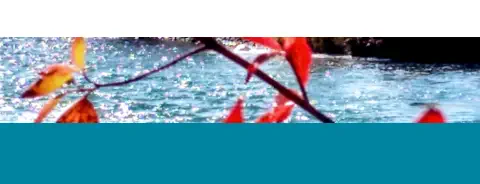
Welcome
The Blackfoot language is spoken by four bands of Blackfoot people: Káínai (Many Chiefs) also
known as the Blood Band, Aapátohsipiikáni (North Peigan), Aamsskáápipikani (South Peigan), and
Siksiká (Blackfoot).
It is acknowledged that there are dialects within these four bands.
Originally, Blackfoot was a spoken language, not written. For those whose first language was
Blackfoot, they learned as children by listening carefully and repeating.
Learnblackfoot.ca will help you to learn Blackfoot in a similar way. You will enjoy it’s interactive ap-
proach, designed to help you learn and recall words and phrases, and see how to use them in normal
conversation.
The Blackfoot Language
The Blackfoot Culture
Traditional territories included parts of Saskatchewan, Alberta, and Montana. In the past, they
moved where there was an abundance of food that included the harvesting of buffalo, elk, deer,
fish, birds, wild herbs, vegetables, and berries. They also became skilled horsemen when the
horse became available, which aided them in various activities.
The Blackfoot Tribe enjoys a rich culture that includes showing respect for Á’pistotooki (Creator).
Culture is greatly influenced by creation. Traditionally, clothing was crafted from what the surround-
ing environment offered. Social dances are often in imitation of animals, while others tell a story.
Today, dancing and singing is still a big part of socializing. When attending social dances, called
pow wows, you will see strikingly beautiful handcrafted clothing made of animal skins, beads,
feathers, fine cloths and vibrant ribbons, along with athletic and intricate dances, and the singing of
both men and women.
Visiting and telling stories, along with the comforting taste of a hearty meat soup, or a simple cup of
mint tea is an important part of the communication enjoyed. So pull up a seat, and click on the
“Let’s Get Started!” button to begin your learning adventure!

© Kainai Transition Centre Society 2021


Welcome

The Blackfoot language is spoken by four bands of Blackfoot people: Káínai
(Many Chiefs) also known as the Blood Band, Aapátohsipiikáni (North Peigan),
Aamsskáápipikani (South Peigan) and Siksiká (Blackfoot).
It is acknowledged that there are dialects within these four bands.
Originally, Blackfoot was a spoken language, not written. For those whose first
language was Blackfoot, they learned as children by listening carefully and
repeating.
Learnblackfoot.ca will help you to learn Blackfoot in a similar way. You will
enjoy it’s interactive approach designed to help you learn and recall words and
phrases, and see how to use them in… normal conversation.
The Blackfoot Language
TheBlackfoot Culture
Traditional territories included parts of Saskatchewan, Alberta, and Montana.
In the past, they moved where there was an abundance of food that included
the harvesting of buffalo, elk, deer, fish, birds, wild herbs, vegetables, and
berries. They also became skilled horsemen when the horse became avail-
able, which aided them in various activities.
The Blackfoot Tribe enjoys a rich culture that includes showing respect for
Á’pistotooki (Creator). Culture is greatly influenced by creation. Traditionally,
clothing was crafted from what the surrounding environment offered. Social
dances are often in imitation of animals, while others tell a story. Today, danc-
ing and singing is still a big part of socializing. When attending social dances,
called pow wows, you will see strikingly beautiful handcrafted clothing made of
animal skins, beads, feathers, fine cloths and vibrant ribbons, along with ath-
letic and intricate dances, and the singing of both men and women.
Visiting and telling stories, along with the comforting taste of a hearty meat
soup, or a simple cup of mint tea is an important part of the communication
enjoyed. So pull up a seat, and click on the “Let’s Get Started!” button to begin
your learning adventure!


© Kainai Transition Centre Society 2021

Welcome

The Blackfoot language is spoken by four
bands of Blackfoot people: Káínai (Many
Chiefs) also known as the Blood Band,
Aapátohsipiikáni (North Peigan),
Aamsskáápipikani (South Peigan), and
Siksiká (Blackfoot).
It is acknowledged that there are dialects
within these four bands.
Originally, Blackfoot was a spoken lan-
guage, not written. For those whose first
language was Blackfoot, they learned as
children by listening carefully and repeating.
Learnblackfoot.ca will help you to learn
Blackfoot in a similar way. You will enjoy it’s
interactive approach designed to help you
learn and recall words and phrases, and
see how to use them in normal
conversation.
The Blackfoot Language
TheBlackfoot Culture
Traditional territories included parts of
Saskatchewan, Alberta, and Montana. In
the past, they moved where there was an
abundance of food that included the har-
vesting of buffalo, elk, deer, fish, birds, wild
herbs, vegetables, and berries. They also
became skilled horsemen when the horse
became available, which aided them in var-
ious activities.
The Blackfoot Tribe enjoys a rich culture
that includes showing respect for Á’pisto-
tooki (Creator). Culture is greatly influenced
by creation. Traditionally, clothing was
crafted from what the surrounding environ-
ment offered. Social dances are often in im-
itation of animals, while others tell a story.
Today, dancing and singing is still a big part
of socializing. When attending social
dances, called pow wows, you will see
strikingly beautiful handcrafted clothing
made of animal skins, beads, feathers, fine
cloths and vibrant ribbons, along with ath-
letic and intricate dances, and the singing
of both men and women.
Visiting and telling stories, along with the
comforting taste of a hearty meat soup, or
a simple cup of mint tea is an important
part of the communication enjoyed. So pull
up a seat, and click on the “Let’s Get
Started!” button to begin your learning
adventure!


© Kainai Transition Centre Society 2021
















